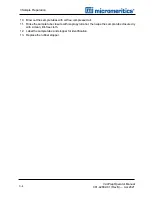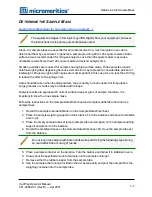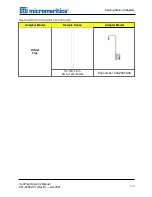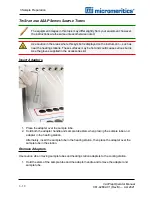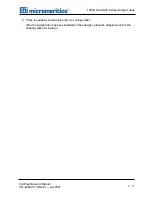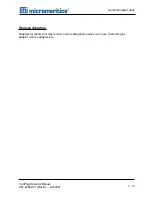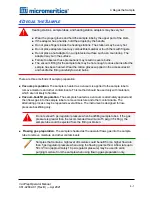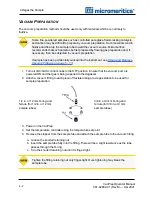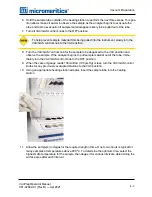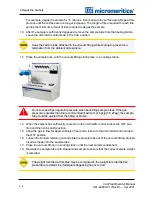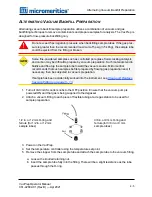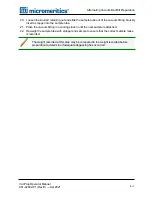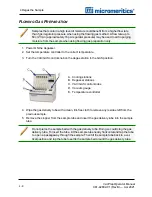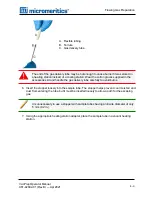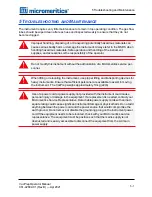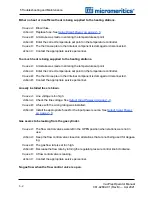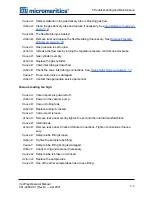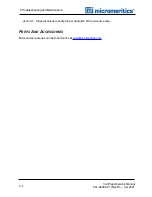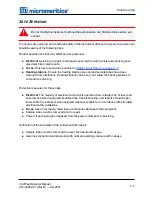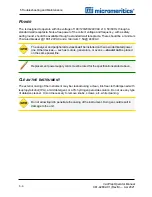
6. Hold the sample tube outside of the heating station to perform the next three steps. This pos-
ition allows makes it easier to observe the sample as the analyzer begins to evacuate the
tube and to stop evacuation if sample material appears likely to be pulled out of the tube.
7. Turn all VAC/GAS control knobs to the OFF position.
To help prevent sample material from being pulled into the instrument, slowly turn the
VAC/GAS control knob to the VAC position.
8. Turn the VAC/GAS control knob for the sample to be degassed to the VAC position and
observe the sample. If the analyzer begins to pull sample material out of the tube, imme-
diately turn the VAC/GAS control knob to the OFF position.
9. When the vacuum gauge reads 100 millitorr (100 μmHg) or less, turn the VAC/GAS control
knobs for any previously evacuated stations to the VAC position.
10. Using an appropriate heating station adapter, insert the sample tube into the heating
station.
11. Allow the sample(s) to degas for the required length of time. One to two hours is typical for
many samples at temperatures above 200 ºC. To determine the optimum time, select the
highest safe temperature for the sample, then degas it for various intervals, determining the
surface area after each interval.
Vacuum Preparation
VacPrep Operator Manual
061-42802-01 (Rev B) — Apr 2021
4 - 3


